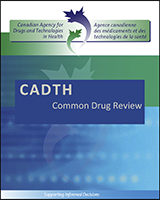Two randomized controlled phase 3b trials met the selection criteria for inclusion in the systematic review: PKU-016 and the SPARK study. In a proportion of patients identified as Phe responders, SAP + a Phe-restricted diet either reduced (PKU-016) or maintained (SPARK) Phe blood levels within the target range. The magnitude of the reduction in Phe levels with SAP + diet was similar to that of placebo + diet, or diet alone, respectively, in the included trials. In the SPARK study, diet alone was able to maintain patients within the target Phe blood level range of 120 to 360 µmol/L, although SAP + diet was associated with a statistically significant increase in dietary Phe tolerance compared with diet alone. In neither trial was a reduction in Phe blood levels or an increase in Phe tolerance associated with diet liberalization or improved quality of life, both of which are outcomes that are important to patients. In PKU-016, improvements from baseline in various neuropsychiatric/neurocognitive outcomes were observed with SAP + diet, including ADHD symptoms in a subpopulation of Phe responders, but the differences between treatment arms were either not statistically significant or inconsistent. Interpretation of the results from the included trials is complicated by a large placebo effect and lack of validation of measured outcomes or identification of MCIDs in patients with PKU. The safety and tolerability profile of SAP was consistent with that reported in the original CDR review, which suggests that SAP is generally safe and well tolerated. Overall, the new clinical evidence does not appear to reduce the uncertainty identified in the original CDR review regarding identification of a subpopulation of patients with PKU who will ultimately benefit from SAP treatment, what is considered to be a clinically meaningful response to SAP, and whether the changes observed in Phe levels are correlated with clinically important outcomes.

